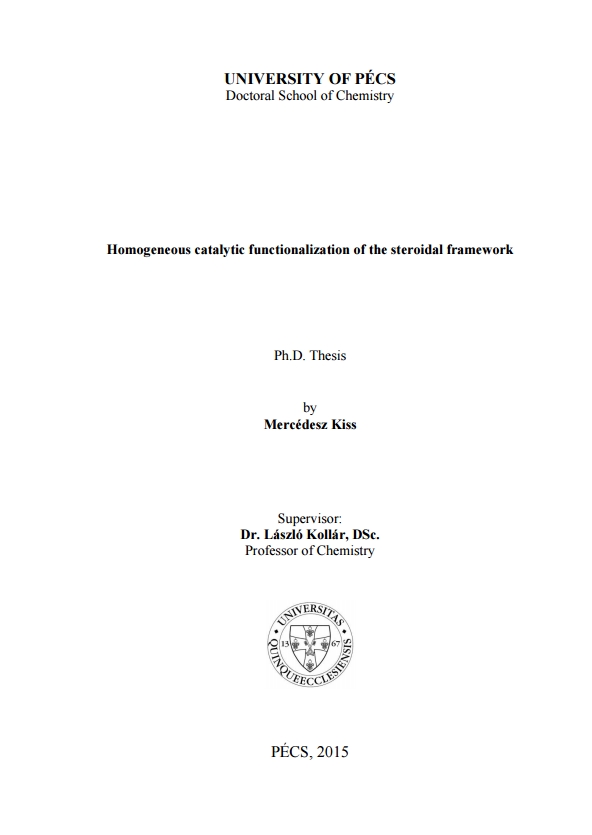Homogeneous Catalytic Functionalization of the Steroidal Framework
Abstract
Using palladium-catalyzed homogeneous aminocarbonylation as a key reaction 3,17-dicarboxamido-androst-3,5,16-triene and 3,17-dicarboxamido-androst-2,4,16-triene derivatives possessing various amide moieties were synthesized under mild reaction conditions such as atmospheric carbon monoxide pressure and 50 °C. Compounds containing 3-iodo-3,5-diene, 3-iodo-2,4-diene and 17-iodo-5,16-diene structural motifs were used in the aminocarbonylation and the N-nucleophiles were varied systematically. Three amines, such as tert-butylamine, piperidine and methyl alaninate were used as N-nucleophiles in the aminocarbonylation. All variations of 3,17-dicarboxamides were synthesized using this methodology.
A set of new steroid dimers linked through ring A-ring A or ring D-ring D was synthesized under relatively harsh conditions, such as high carbon monoxide pressure and 100 °C, using palladium-catalyzed homogeneous aminocarbonylation. Compounds containing 3-iodo-3,5-diene, 3-iodo-2,4-diene and 17-iodo-5,16-diene functionalities were used in the aminocarbonylation and four diamines, such as 1,2-diaminoethane, 1,4-diaminobutane, 1,4-diaminobenzene and (1S,2S)-(+)-1,2-diaminocyclohexane were used as N-nucleophiles.
Androst-4-ene-3,17-dion was used as a starting material for the iodoalkene derivatives above. The synthetic strategy of the multistep synthesis was based on the consecutive use of three types of reactions: (i) the protection/deprotection of one of the keto functionalities (3-one or 17-one) as ethylene ketals, (ii) the transformation of the other keto group to iodoalkene functionality via its hydrazone, and (iii) palladium-catalyzed aminocarbonylation of the iodoalkene functionality.

